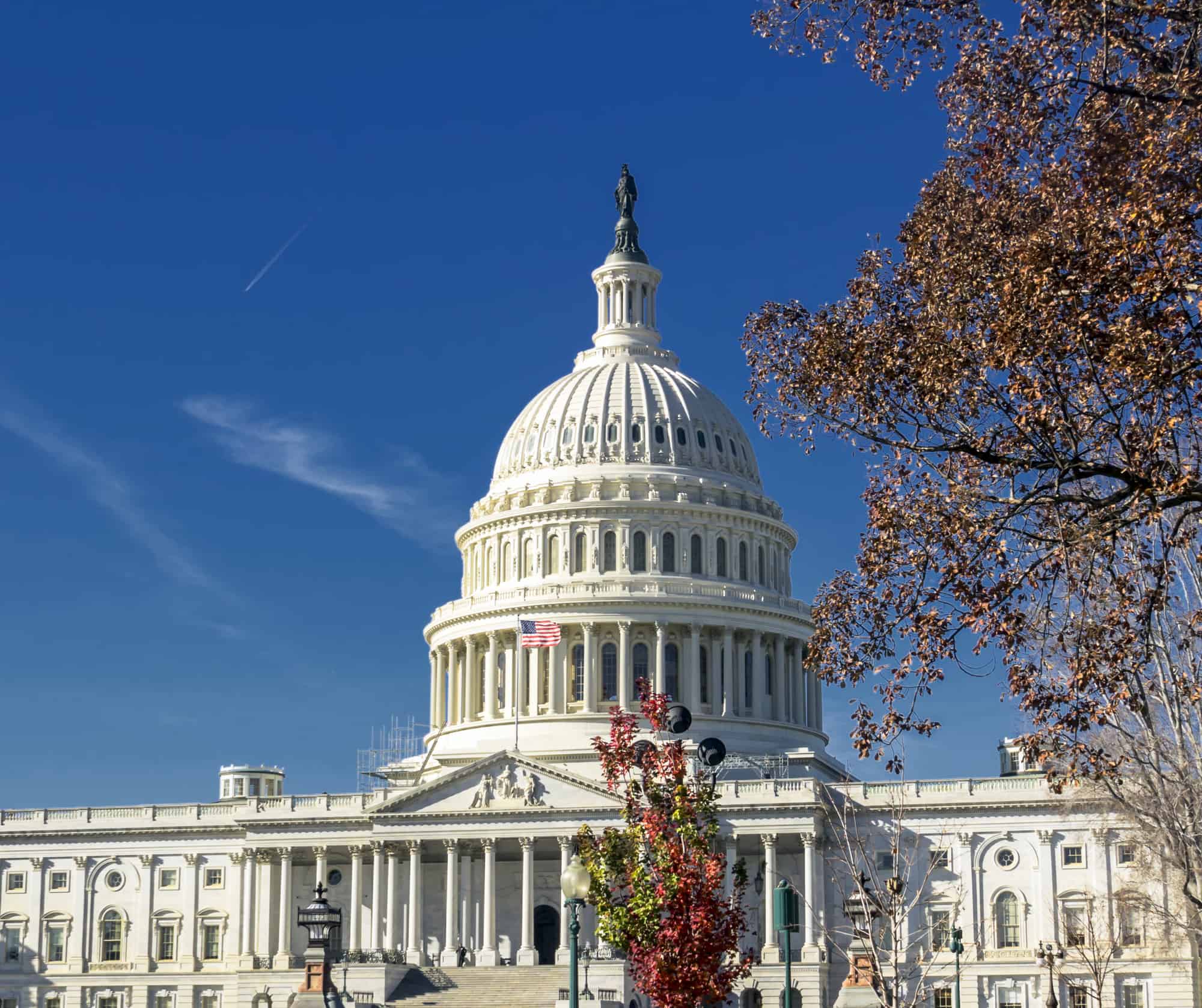To make Wealthtender free for readers, we earn money from advertisers, including financial professionals and firms that pay to be featured. This creates a conflict of interest when we favor their promotion over others. Read our editorial policy and terms of service to learn more. Wealthtender is not a client of these financial services providers.
➡️ Find a Local Advisor | 🎯 Find a Specialist Advisor

Global monetary policy is based on the value of a risk-free asset plus a premium. In many financial models worldwide, the risk-free asset of choice has been US Treasuries. The US treasury is known for its liquidity and safety, and such has been used as collateral for many trade transactions around the world. The US government issues debt in the form of Treasuries to fund the operations of the government. It then takes revenue (i.e. taxes) to pay interest on the debt.
A default on US treasuries would shock the whole financial system. Although there is a very low probability of default, the US has had to come to the breaking point one too many times and has created a repeating pattern of raising the debt ceiling at the very last minute to pay bills. This has had many nations question doing global business in the US currency.
So How Did We Get to This Position?
The short answer is the government has been spending more money than it collects for several years. The government technically ran out of money in mid-January when the Treasury hit the debt ceiling of $31.4 Trillion. When the debt ceiling was hit, the Treasury Department started spending funds from its “checking account” called the Treasury General Account (TGA) and an emergency fund.
The Congressional Budget Office’s estimates said that those funds plus tax revenues should last till the end of August. However, this year’s tax collections have been light compared to estimates. And in addition, there was disaster relief for much of California that allowed individuals to file and pay 2022 taxes in October. Because of the light tax collections, the August deadline has been moved up to as early as June 1st in some estimates.

Risks
The debt ceiling showdown of 2011 had a similar economic background to what we have today, the S&P 500 lost close to 20% in a 4-month window, with a large part of that drop coming within days of the actual potential default. During this period, US CDS spreads moved straight up to 64.6 BPS. Today we are at 70.8 BPS on the CDS index with a positive S&P 500, showing that the risk is really high.
Another specific issue the Treasury has this time around is a mismatch in debt and income needs. Kind of like all these regional banks, the Fed has a lot of short-term debt coming due, but it needs funds today. To have funds today, the Fed needs to refinance that debt to create immediate liquidity.
However, the interest rate on refinancing debt today is significantly higher than several years ago. That extra interest or deferred balance must be made up before giving those funds to the Treasury. But what once was funding the Treasury (government) with $90 billion/year from interest payments has flipped in the last 6 months or so and has created a $42 billion dollar liability that will be collected down the road. This gives Congress less time to act because every month, that deferral amount goes up by $7-8 billion in debt.
Speaking of Congress, let’s look at the timeline ahead of us.
On May 9th, The ‘Big 4’ members of Congress met with the President to negotiate a deal.
On May 19th, the President leaves on a trip to Japan and Australia.
On May 26th, Congress is out for recess for Memorial Day.
That gives Congress a very compressed timeline to work on resolving the debt ceiling.
But what happens if nothing is solved?
The Treasury would have revenue from taxes and maturing bonds, and it would need to issue new bonds to replace that debt. In 2011 the Treasury said that it would prioritize interest payments and Medicare and then look at cash left on hand and divide equal payments to all other needs.
Not getting all money owed on a debt obligation is a technical default on debt. The government would continue to operate, but the Treasury would not have enough funds to pay obligations in full and on time until a resolution is made. Obviously, there will be many challenges and potential lawsuits if the debt ceiling is not raised.
Potential Short-term Fixes When a Debt Ceiling Is Not Raised
Two main solutions have been floated out there as a bandage to calm markets.
The first is called a premium bond. A premium bond would be a two-year bond that could take new debt raised or refinanced at a 5% premium above current rates (potential 10%+ interest). This pricing would create a large demand for premium bonds and potentially create a lot of liquidity upfront.
Another idea is for the Treasury to create a $1 Trillion dollar coin. I.e., the Treasury would mint a new coin and deposit it with the Fed to create immediate liquidity. Both solutions create more uncertainty and volatility in a traditionally stable market.
Within Investments
The biggest risks we are monitoring include a significant breakdown in all equity/bond markets and a potential for money market funds to break Net Asset Value (“NAV”). We are already positioned conservatively within investments. Money market funds and accounts seek to provide stability, security, and safety for our clients’ cash investments by investing in high-quality securities and maintaining a high level of liquidity. We have started and will continue to have conversations with our custodian partners, Fidelity and Schwab, regarding money market funds in light of the debt ceiling risk.
In September of 2008, money markets funds broke NAV by $0.03, meaning that $1.00 was worth $0.97. Money market funds recovered quickly within a 1-2 week timeframe, however, it did cause many clients inconvenience and stress. Although we do not see the conditions of a liquidity crisis due to market conditions, if the debt ceiling is not increased, there could be a delay in short-term funds associated with treasuries.
This article was originally published here and is republished on Wealthtender with permission.

About the Author
Amar Shah, CFA, CFP®
Amar Shah founded Client First Capital to create a platform that reflects his values and provides impartial, evidence-based advice to his clients around maximizing their financial well-being. Amar strongly believes that integrity, transparency, knowledge, and insight are core values for a successful, long-term client relationship.
Amar has more than 20 years of experience in the financial industry, helping individuals, families, and businesses achieve their financial goals. He is experienced in estate planning advice, retirement planning, and risk management. He and his team help clients protect, distribute, and grow their wealth, and they are committed to cultivating long-lasting client relationships based on trust and mutual respect.
Find a Financial Advisor
Do you have questions about your financial future? Find a financial advisor who can help you enjoy life with less money stress by visiting Wealthtender’s free advisor directory.
Whether you’re looking for a specialist advisor who can meet with you online, or you prefer to find a nearby financial planner, you deserve to work with a professional who understands your unique circumstances.
Have a question to ask a financial advisor? Submit your question and it may be answered by a Wealthtender community financial advisor in an upcoming article.
–
Do you already work with a financial advisor? You could earn a $50 Amazon Gift Card in less than 5 minutes. Learn more and view terms.
This article originally appeared on Wealthtender. To make Wealthtender free for our readers, we earn money from advertisers, including financial professionals and firms that pay to be featured. This creates a natural conflict of interest when we favor their promotion over others. Wealthtender is not a client of these financial services providers.
Disclaimer: This article is intended for informational purposes only, and should not be considered financial advice. You should consult a financial professional before making any major financial decisions.
To make Wealthtender free for readers, we earn money from advertisers, including financial professionals and firms that pay to be featured. This creates a conflict of interest when we favor their promotion over others. Read our editorial policy and terms of service to learn more. Wealthtender is not a client of these financial services providers.
➡️ Find a Local Advisor | 🎯 Find a Specialist Advisor
